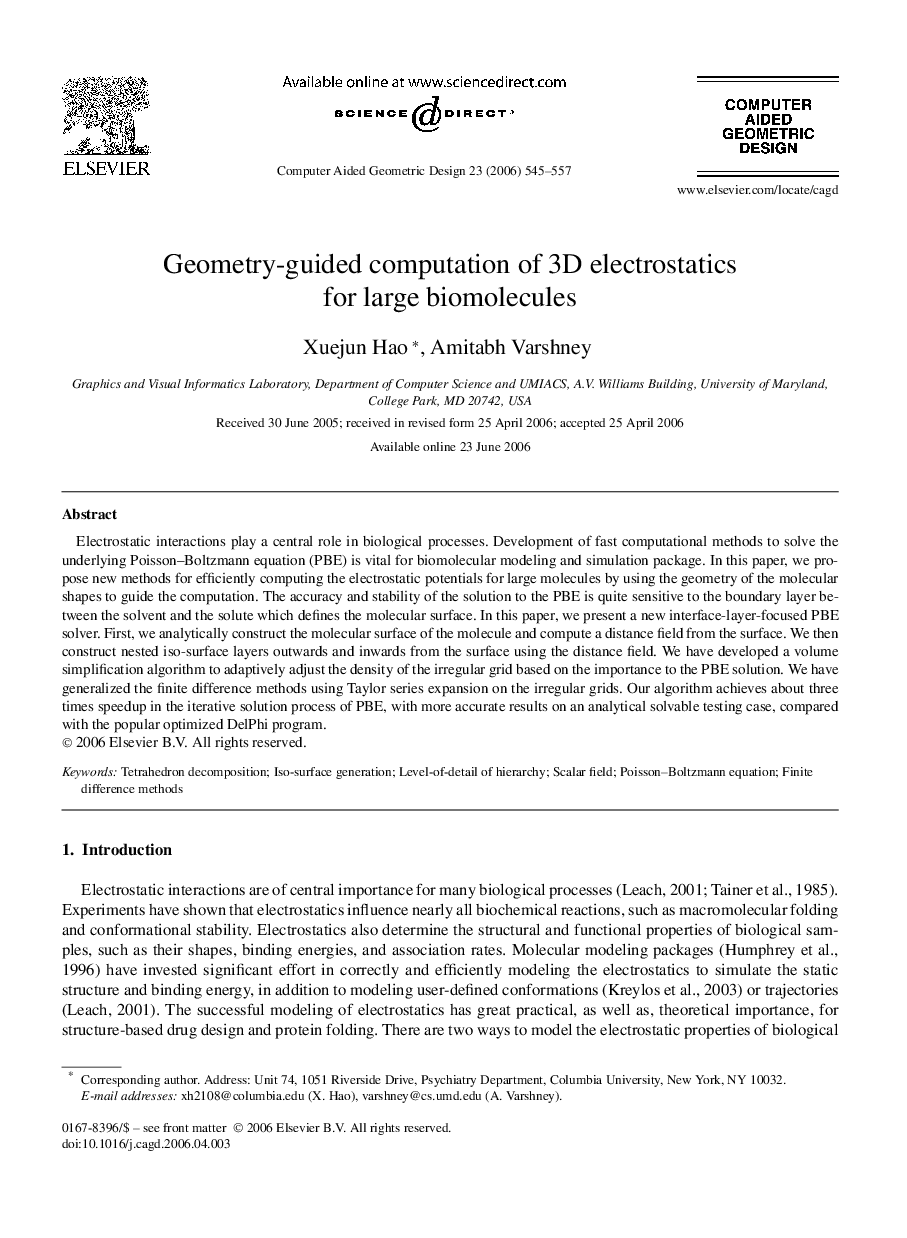| Article ID | Journal | Published Year | Pages | File Type |
|---|---|---|---|---|
| 441361 | Computer Aided Geometric Design | 2006 | 13 Pages |
Electrostatic interactions play a central role in biological processes. Development of fast computational methods to solve the underlying Poisson–Boltzmann equation (PBE) is vital for biomolecular modeling and simulation package. In this paper, we propose new methods for efficiently computing the electrostatic potentials for large molecules by using the geometry of the molecular shapes to guide the computation. The accuracy and stability of the solution to the PBE is quite sensitive to the boundary layer between the solvent and the solute which defines the molecular surface. In this paper, we present a new interface-layer-focused PBE solver. First, we analytically construct the molecular surface of the molecule and compute a distance field from the surface. We then construct nested iso-surface layers outwards and inwards from the surface using the distance field. We have developed a volume simplification algorithm to adaptively adjust the density of the irregular grid based on the importance to the PBE solution. We have generalized the finite difference methods using Taylor series expansion on the irregular grids. Our algorithm achieves about three times speedup in the iterative solution process of PBE, with more accurate results on an analytical solvable testing case, compared with the popular optimized DelPhi program.
